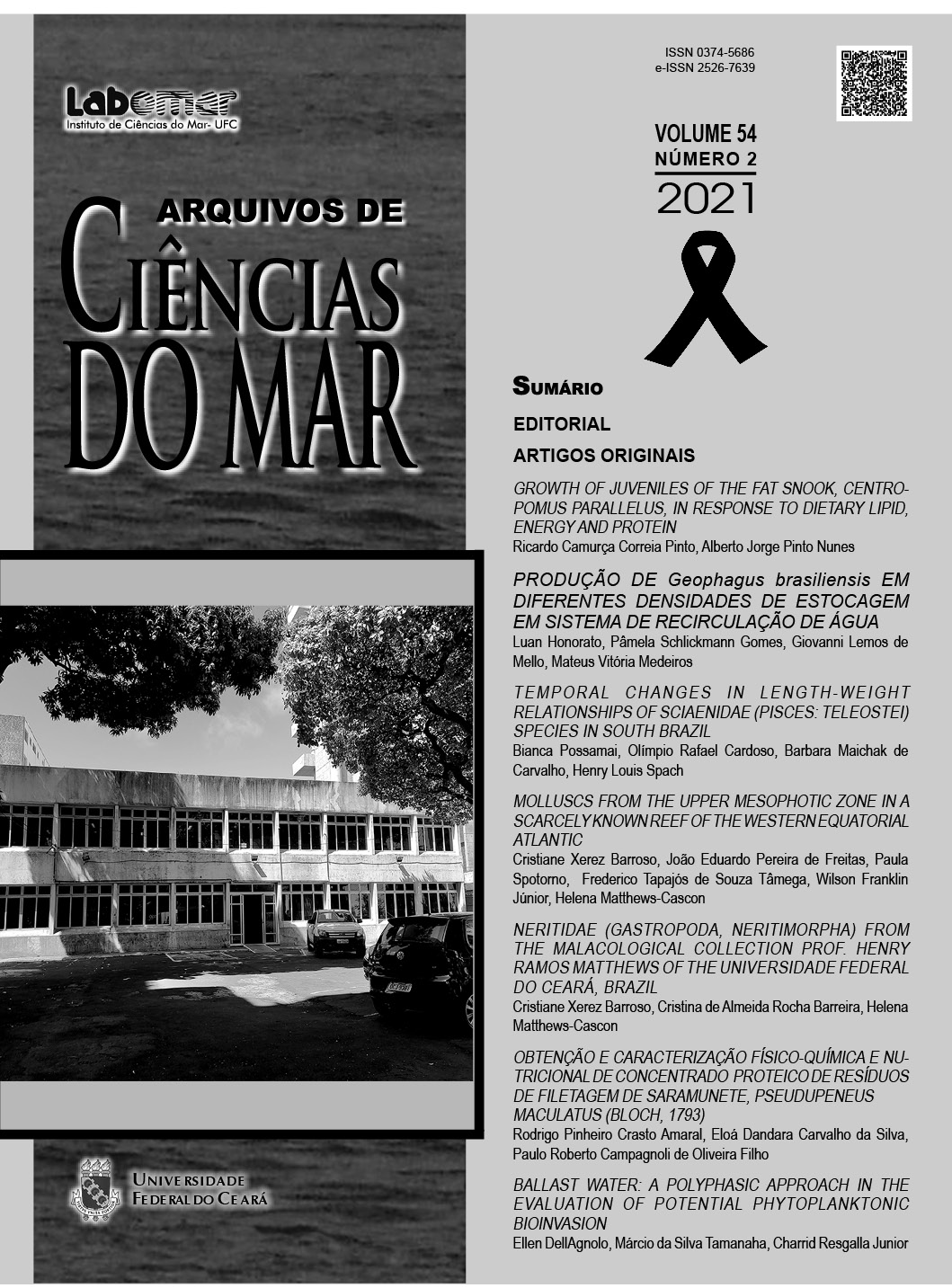Preliminary characterization of solids in the water of an integrated aquaponic and biofloc system
Preliminary characterization of solids in the water of an integrated aquaponic and biofloc system
DOI:
https://doi.org/10.32360/acmar.v54i2.44065Abstract
The present study aimed to characterize and quantify the different classes of solids in an aquaponics system with biofloc technology (BFT). The solids dynamics were analyzed at three points: effluent from the fish tank; sump and effluent from plant cultivation tanks. An average of 601 mg L-1 of total solids was measured in the fish effluent, 618.38 mg L-1 in the sump and 546.94 mg L-1 in the plant effluent. In the third week there was a decrease in the total solids content in the effluent of fish tank and an increase in the levels in the sump and effluent of the plants. There was a decrease in the amounts of dissolved solids in the effluent of fish and plants during the experimental period, which can be explained by the intake of nutrients by microorganisms and vegetables, in the fish and plant tank, respectively. The monitoring of the fluctuation of solids levels throughout an aquaponics cultivation with BFT helps in understanding the functioning and effectiveness of the filtering devices, in addition it may give us a report with greater accuracy on the conditions of the
environment. Further studies should be carried out to better understand the dynamics of solids in
an integrated aquaponics and BFT culture.
Keywords: organic matter, Oreochromis niloticus, microbial community.
Downloads
Published
Issue
Section
License
1. Proposta de Política para Periódicos de Acesso Livre
Autores que publicam nesta revista concordam com os seguintes termos:
- Autores mantém os direitos autorais e concedem à revista o direito de primeira publicação, com o trabalho simultaneamente licenciado sob a Licença Creative Commons Attribution que permite o compartilhamento do trabalho com reconhecimento da autoria e publicação inicial nesta revista.
- Autores têm autorização para assumir contratos adicionais separadamente, para distribuição não-exclusiva da versão do trabalho publicada nesta revista (ex.: publicar em repositório institucional ou como capítulo de livro), com reconhecimento de autoria e publicação inicial nesta revista.
- Autores têm permissão e são estimulados a publicar e distribuir seu trabalho online (ex.: em repositórios institucionais ou na sua página pessoal) a qualquer ponto antes ou durante o processo editorial, já que isso pode gerar alterações produtivas, bem como aumentar o impacto e a citação do trabalho publicado (Veja O Efeito do Acesso Livre).

